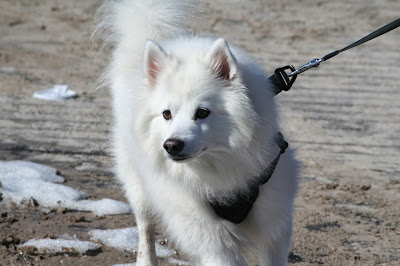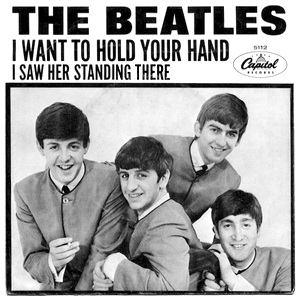PERSONAL COMPUTERS - HARDWARE REVIEW - APPLE WEIGHS IN WITH MACINTOSH - NYTimes.com
By ERIK SANDBERG-DIMENT
Published: January 24, 1984
WHEN it comes to apples, I've always preferred tart, crisp ones like Granny Smiths or Idas to McIntoshes. It seems to me, therefore, that as a new name in Apple Computer's growing orchard of machines one of those would have done admirably. What could sound more ''user friendly'' than a Granny Smith computer around the house. Then again, maybe Apple had hamburgers on the mind in naming its new computer - in hopes of its Mac becoming as much a part of the American mythos as the golden arches are.

Names, and their concomitant marketing strategy, aside, today's launching of the Macintosh by Apple, unlike I.B.M.'s recent introduction of the rather unexceptional PCjr, presages a revolution in personal computing. Like all major innovations, this one entails a high risk of failure. Apple lost the first battle, begun with its $10,000 Lisa. The second assault is with a machine only a fourth the cost of its big sister and almost as versatile.
One computer the Mac definitely cannot be compared with, though many people will try, is the PCjr. That would be like comparing apples and peanuts. It just cannot be done. The PCjr is a more limited product offered at a lower price. The only real connection between the two machines is that the introduction of both computers was anxiously awaited for what seems a decade.
The roughly 17-pound Macintosh comes in a square bushel-basket-size canvas tote bag with an oversized zipper. The preproduction version I saw did not sport the Apple-with-a-bite logo. The addition of this emblem could well turn the bag into a classic status symbol, and even if the computer stayed home, the bag would accompany people on the move, stuffed with picnic goodies or laundry.
As to the computer itself, unpacked, it sits like a towering, square, robotic Cyclops, its single disk drive an off-center mouth. The machine definitely has personality, though its high profile, designed, no doubt, to reduce the amount of desk space needed, is a bit startling.
The first thing to take me by surprise as I sat down at the Macintosh was not the mouse pointer used to move the cursor on screen, which everyone has been expecting, but the size of the screen itself. With a scant nine-inch diagonal, it presents a diminutive five-by-seven viewing image. My personal dislike for small screens made me chalk up an immediate minus on the Mac's scorecard, particularly since I found myself, as I usually do when confronted with a miniscreen, hunkering right up to the computer, much closer than comfort called for, as I flicked it on. Then came the second surprise.
The Mac display makes all the other personal computer screens look like distorted rejects from a Cubist art school. With a 512-line horizontal by 342-line vertical, the display conveys an image that is refreshingly crisp and clear. The use of square dots rather than the standard rectangular ones at each of the almost 200,000 line crossings adds even more to the sharpness of the picture. After a couple of hours of looking at this screen, going back to the Apple IIe at home brought tears to my eyes. What the Mac adds in visual clarity, however, it takes away in chromatics. At present, only a black-and-white screen is available. Apple appears to be aiming this computer at the small-business and educational markets rather than the home entertainment segment, so perhaps the company feels that color is not necessary. Certainly the machine could not be delivered with the rainbow at the current price of roughly $2,495. Even so, I suspect the absence of color capability is a mistake, one which, along with the diminutive screen size, will hopefully be rectified eventually by add-ons for those wanting them. As it is, if you can live with the small screen, and the lack of color does not bother you, there is simply no personal computer that comes close to the Mac in display quality.
Another startling feature that I became aware of after a few minutes, although it may be a minor point to some people, is the absence of fan noise. The vacuum cleaner sound effects so annoying to many people and so prevalent in small computers is totally nonexistent. The reason is simple: The Macintosh has been engineered to cool itself. There is no fan to drown one's thinking. In fact, at 60 words per minute, the only sound you will hear is the clicking of the keyboard.
Keyboards are a very subjective matter. This one is certainly more comfortable and responsive than those to be found on the Apple II series. It is also light enough to rest comfortably on one's lap, which is what manufacturers seem to think people do with these things, although I personally have never seen anyone work that way. Furthermore, it solves one of the minor mysteries of personal computer engineering that has long bothered me; namely, why does the keyboard cord always have to plug into the rear of the computer so it inevitably becomes snarled coming around the side? The answer is that it does not. The Mac's keyboard plugs quite naturally into the front of the computer and never seems to get hung up.
That is one plus for the Mac's design - followed by a negative. There is no numeric keypad on the board. A separate one may be attached, but then, counting the mouse's tail, you have three cables snaking their way back to the machine. All in all, I get the feeling, as I do with I.B.M. PC products, that a lot of outside manufacturers are going to be cranking out modified keyboards for owners who do not like the standard model.
As to the mouse, it is part and parcel of the Mac revolution, and it will probably be the reason you either sign up for or turn your back on this machine. To a large extent, the Macintosh works with what has been termed a ''finder environment.''
YOU find either a word or an icon or pictogram on the screen representing what you want the computer to do, then slide the mouse on your desk to move the cursor into position over that screen object, then press the button on the mouse to activate that particular part of the program.
For instance, there is a menu bar at the top of the screen with the words ''file,'' ''edit,'' ''U,'' ''special,'' and so on. Slide the cursor over to ''file,'' click the mouse button, and a window beneath the word opens up with such commands as ''open,'' ''duplicate,'' ''get info,'' ''close'' and ''print.'' To print what is in a file, all you do, essentially, is bring the cursor down to ''print,'' press the mouse button and release.
The fundamental difference between the Mac and other personal computers is that the Macintosh is visually oriented rather than word oriented. You choose from a menu of commands by simply pressing the wandering mouse's button rather than by using a number of control keys or by entering words.
More on the pluses and minuses of the innovative Mac software, such as side orders of Macwriter, Macpaint and Macpascal, will appear in next week's column.
 Coney Island’s residents remain largely isolated from local progress. | New York Observer
Coney Island’s residents remain largely isolated from local progress. | New York Observer






























